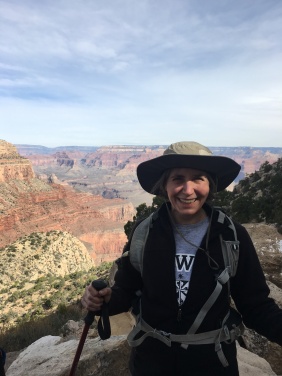
What approach works best when helping learners to overcome academic challenges? As educators, it can be helpful to reflect on our own learning struggles. In fact, hiking in the Grand Canyon over this Spring Break, I experienced a memorable learning challenge at the edge of a magnificent precipice.
Though I wanted to continue down the path at the start of the Grandview Trail, I was uncertain about how to approach it, and my knees were shaking with apprehension. Before barely descending, I returned to the top, defeated. But a little later, with the help of our guide, I tried again and made it far enough to enjoy some incredible views of the canyon.
My journey on this historical mining trail uncovered some valuable nuggets for struggling students (like me):
- Students are most likely to persist if the goal is personally relevant and meaningful to them. The reason I overcame the challenge is because I really wanted to explore the canyon.
- Students must recognize that “trying again” is part of the learning process. When I first climbed back out of the canyon, I would have been finished with this trail had I not understood that “trying again” was a ready option.
- Students must feel comfortable asking for help. As I hiker, I was thankful to have a knowledgeable, friendly guide who kindly helped me on this trail.
- Sometimes a student’s difficulty may be based more upon self perceptions of ability, rather than actual ability. Teachers need to express their confidence in their student’s ability to meet challenges. Hearing that others were confident in my ability helped me immensely on this trail.
- Sometimes students need the opportunity to work through challenges slowly. Accomplishing my goal at a speed that was manageable for me brought success. I’m glad I wasn’t being timed on this one.
- Laughter is key. When hiking in new terrain, a laugh and a little humor helped to make learning fun and to keep difficulties in perspective. Laughter in the face of challenge is empowering.
- It really works to break down challenging tasks, set individual student goals, and celebrate success. Catching up to the rest of the group was not going to happen for me on this hike. However, I left feeling that I accomplished a great deal. My guide helped me adjust my goal to meet my learning needs—even if this was just to navigate the first leg of the journey. When the other hikers returned from their longer journey, I still had my own accomplishment to celebrate. I left the canyon wanting more…

